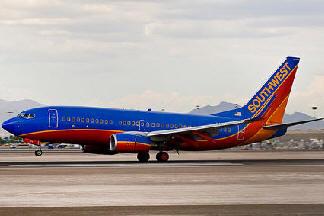 |
|
|
|
|
|
|||
|
By Steve Hall |
||||
 |
April 24, 2010 -
The National Transportation Safety Board has opened an investigation
into the near collision of a commercial jetliner and a small private
plane at the intersection of two active runways at
At about 10:58
a.m. PDT on April 19, Southwest Airlines flight 649, a Boeing 737-700
(N473WN) inbound from Oakland, carrying 119 passengers and a crew of
five was landing on runway 8 while a Cessna 172, in the departure phase
of a “touch and go” on runway 15, passed over the 737.
A “touch and go” is a practice maneuver in which an aircraft
briefly lands on the runway before accelerating and becoming airborne
again. |
|||
|
According to
the Federal Aviation Administration, the airplanes came within 200
feet vertically and 10 feet laterally of each other at the runway
intersection. No one was injured in the incident, which occurred
under a clear sky with visibility of 10 miles.
In March 1977, in what remains the world’s deadliest aviation accident,
two passenger jumbo jets collided on a runway at Tenerife,
In the
The worst
On May 29, 2009, a runway incursion involving a PSA Airlines Canadair
Regional Jet (CRJ)-200, and a Pilatus PC-12 occurred at the
Charlotte/Douglas International Airport (CLT), |
||||
|
The CRJ-200
aircraft was on takeoff roll when the pilots noticed the
When it became
apparent that the The runway incursion issue has been on the NTSB’s Most Wanted List since its inception in 1990. In the late 1980s, an inordinate number of runway incursions ground collision accidents resulted in substantial loss of life, and the NTSB issued numerous safety recommendations addressing the issue. The Federal Aviation Administration (FAA) has since taken action to inform controllers of potential runway incursions, improve airport markings, and install the Airport Movement Area Safety System (AMASS) and ASDE-X. These systems are an improvement but are not sufficient as designed to prevent all runway incursions. |
| ©AvStop
Online Magazine
Contact
Us
Return To News
|
|
